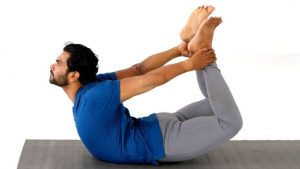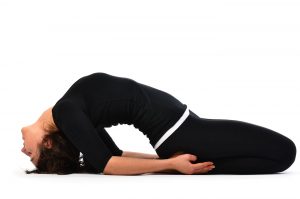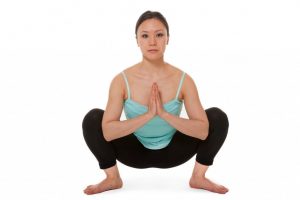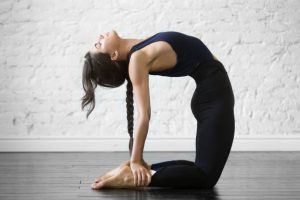AMENORRHEA – YOGA ASANAS
- December 14, 2022
- Posted by Dr. Vaidya Karanvir Singh
- 0 Comment(s)
Table of Contents
INTRODUCTION
Amenorrhea is a medical condition in which there is absence of menstruation. It occurs due to a problem in the female reproductive system. It can be both temporary and permanent. Menstruation is a monthly flow of blood which occurs due to the shedding of innermost lining of uterus. Hormones play a very important role in this.
Amenorrhea is of two types – primary and secondary amenorrhea. Primary amenorrhea is characterized by the absence of menstruation in whom the periods has not yet started. It is caused due to hormonal problems or any anatomical abnormality.
Secondary amenorrhea is the absence of menstruation for three or more than three consecutive months. It occurs in females who previously had periods. Pregnancy is the most common cause of secondary amenorrhea. However, it can also occur due to hormonal problems.
There are various treatment options available for it. Treatment depends on the underlying cause of the problem. With dietary and lifestyle modifications, the condition can be managed.
WHAT ARE THE POTENTIAL CAUSES OF AMENORRHEA?
Amenorrhea occurs due to several reasons, some are normal and others are due to some underlying health issue. Following are the reasons for amenorrhea:
- Menopause
- Pregnancy
- Breastfeeding
- Polycystic ovarian disease
- Hypothyroidism or hyperthyroidism
- Low body weight or obesity
- Poor nutrition
- Stress
- Uterine scarring
- Structural abnormality of vagina
- Use of contraceptive drugs
- Tumor in pituitary gland
- Chemotherapy
- Radiation therapy
- Absence of any of the parts of reproductive system such as uterus, vagina, cervix, ovaries
- Premature menopause
- Certain medications like antidepressants, blood pressure medicines, etc
- Hysterectomy
- Ovarian tumors
WHAT ARE THE SYMPTOMS OF AMENORRHEA?
Absence of menstruation is the main symptom of amenorrhea. However, there are other symptoms related to it. The symptoms are:
- Acne
- Hot flashes
- Milky discharge from nipples
- Dryness in vagina
- Headache
- Excessive growth of hair on face and body or loss of hair
- Pain in pelvis
- Vision problems
- Changes in breast size
AYURVEDA AND AMENORRHEA
In Ayurveda, amenoorhea is called anartava or nashartava. It is the lack of menstrual flow. Body is composed of tridoshas – vata, pitta and kapha. There harmony leads to a healthy state of mind and body. In anartava, kapha and vata doshas get disturbed causing blockage of the channels carrying menstrual blood. Thus there occurs no discharge of the menstrual blood.
Uterine enemas are considered to be very beneficial for treating amenorrhea. Celastrus, acorus, pterocarpus, decoction of sesame and jaggery are some of the herbs which are used for the treatment.
YOGA FOR TREATING AMENORRHEA
Now-a-days, there is lot of stress to girls or mature women as they be school exams, college assignments, work deadlines or daily chores. Both mind and body are exhausted leading to various health implications.
Yoga is an ancient physical exercise practice which helps in both body and mind relaxation. It complements medicines for boosting reproductive well-being and maintaining menstrual flow.
The yoga poses which are beneficial in amenorrhea are:
1. DHANURASANA
Dhanu means bow and asana means body posture. In dhanurasana, the shape of the body is made like that of a bow. The pose should be performed 4-5 hour after meals. The best time is of early morning.
How to do it:
- Lie in the stomach with the feet apart.
- Then fold the knees and take your hands backwards and hold the ankles.
- Breathe in and lift the chest up from the ground. Pull the legs upwards and more towards the back.
- Keep the body posture stable and see forward. Pay attention to the breath.
- Maintain posture for 15-20 seconds and bring the legs and chest gently to the ground.
Contraindications:
- Neck injury
- Hernia
- Hypertension or hypotension
- Lower back pain
- Migraine
- Recent abdominal surgery
2. MATSYASANA
Matsyasana is the fish pose asana. If this asana is carried out in water, the body will float easily like a fish.
How to do it:
- Lie on back with feet together and hands relaxed.
- Place the hands under the hips and bring the elbows close to each other.
- Lift the head and chest up while breathing in.
- When the chest is elevated, lower the head backwards and touch floor with the top of the head.
- Hold the pose as long as a person feels comfortable.
Contraindications:
- High or low blood pressure
- Migraine
- Insomnia
3. MALASANA
It is the squat pose. It is very beneficial for treating irregular periods.
How to do it:
- Squat with keeping the feet as close together as possible.
- Separate the thighs slightly wider than torso and lean the torso forward.
- Press the elbows along the inner side of thighs and join the palms.
- Hold the posture for 20-30 seconds.
Contraindications:
- Low back pain
- Knee injury
4. USTRASANA
Ustra means camel and asana means body posture. It is a level back-bending yoga posture which causes opening of heart chakra. This posture increases flexibility of body and strengthens the body posture.
How to do it:
- Kneel on the mat and place the hands on the hips.
- The soles of the feet should be facing the ceiling.
- Arch the back and slide the palms over the feet till the arms are straight.
- Avoid straining the neck and keep it in a neural position.
- Stay in this position for a few seconds.
Contraindications:
- Injury of the back
- Neck injury
- High blood pressure
- Hypotension

Dr. Vaidya Karanvir Singh is the younger Vaidya in Chandigarh Ayurved & Panchakarma Centre. He is the fourth generation in his family who is practicing as a general consultant in Ayurved & Panchakarma treatment at Chandigarh. In his practice, he had treated more than 1 Lakh Plus patients worldwide.





